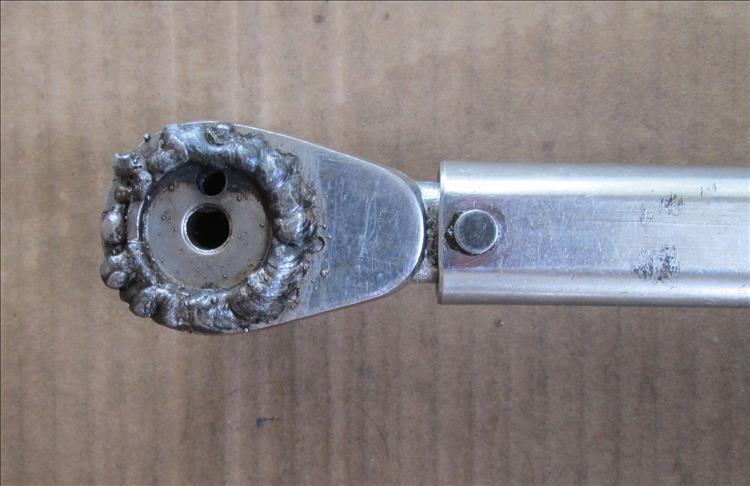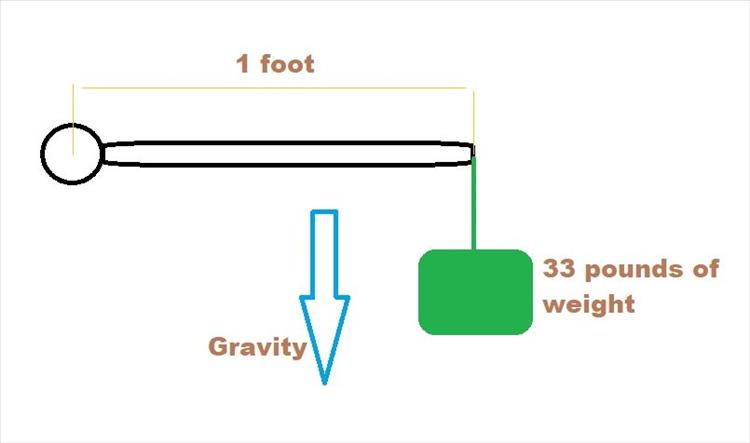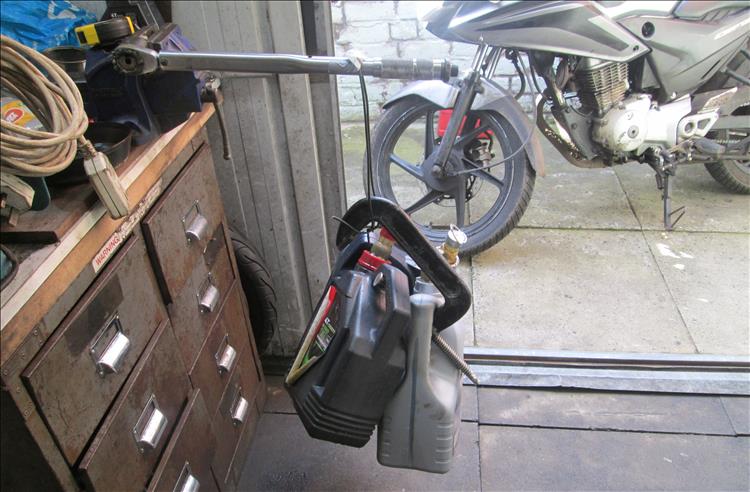Home
Ren's Biking Blog
Old Torque Wrench Accuracy Test
Blog Date 12 Spetember 2020
I was once a young man. Now I'm a middle aged man with all that goes with it. I cannot stand up without groaning "eeuurgh!". I stand in the kitchen wondering why I am in the kitchen. I need to pee at least once in the night. Various body parts ache and if they don't I worry. I digress, often.
When I was a young man I purchased a torque wrench. It was a fairly cheap one as back then I was properly poor, as opposed to now where I have become properly tight. This tool has been with me for around 28 years.

Ah my old friend. My son was still a baby when you came into my life.
I was strictly, firmly and most definitely instructed back then to never ever leave this precision tool "set". By set I mean the handle turned to measure a specific torque. After each use the handle MUST be unscrewed such that there is no pressure on the internal spring. This will help the wrench maintain its accuracy. Apparently.
I have always followed this rule. In the meantime it has been used primarily to set the torque on various rear wheel spindles after countless chain adjustments. It lives by my rear door, hung up next to a 19mm and 24mm socket and 10mm, 12mm and 14mm spanners. Oh and a torch in case nighttime has arrived when an urgent adjustment is required.
It has also been involved with a handful of engine rebuilds and various maintenance and repair tasks over the years.
About 4 years back the ratchet mechanism gave up the ghost so that got welded up because, well, you know, it still measures torque and I am far too tight to buy a new one. Otherwise it has provided years of reliable, trustworthy service.

Erm, yeah. Sorry about that.
I have had cause to re-torque the engine mounts on the CB500X this week. The settings vary from 33 to 45 foot pounds. While tightening the nuts and bolts it *FELT* awfully tight, far tighter than I was comfortable with. Never-the-less I trusted the tool and waited for the "click". But this got me thinking.
Has, over the years, this wonderful tool lost its accuracy? How can I test this?
Torque is not rocket science. Foot-pounds. 33 foot pounds means if you have a spanner that is one foot long and you push or pull it with a 33 pound weight hanging off it perpendicular to gravity on earth, you have 33 foot pounds of torque. Or equally you could have a 33 foot long (but weightless) spanner with one pound of weight on the end.

33 Foot Pounds. 33 pounds hanging from a 1 foot long spanner. I do not own a weightless 33 foot long spanner.
I am aware I don't have the scientifically accurate equipment to precisely measure my torque wrench. Nor am I desiring of an answer accurate to 4 decimal points of a percent. What I desire to find out - "is this tool still accurate enough for my humble needs".
I place a nut and bolt in the vice. I apply the wrench such that it is parallel to the ground. I measure 1 foot from the centre of the bolt and socket and tape some heavy duty wire there. My kitchen scales only measure to 11 pounds (5kg) so I find things, weigh them, then hang them.

It's science Jim, but not as we know it.
Here are my results.
G-Clamp and Mobil 3000 container filled with used oil
13.25 pounds of weight at 1 foot gives a click at 13 foot pounds on the gauge.
As above with 8.75 pounds used oil in a Motul 4l tub
22 pounds of weight at 1 foot gives a click at 21 foot pounds on the gauge.
As above with a further 11 pounds used oil in Pennsoil tub
33 pounds of weight at 1 foot gives a click at 31 foot pounds on the gauge.
My torque wrench is, perhaps, a little shy. At a setting of 45 foot pounds I reckon I'd be applying 48 to 49 foot pounds. This is not perfect but it's not so far out I'm going to buy a new wrench and re-torque everything in sight. In future I'll knock about 5 to 10% off.
There are factors I've not accounted for. The weight of the wrench including the multiplication factor of the length of the wrench for example. I didn't measure larger weights due to my lack of equipment. I'm sure you'll all offer your own insights into the error of my ways too. BUT! But I feel reassured that while my aged torque wrench is not right at the crease it is still at least in the field of play rather than somewhere out in the parking lot.
I'm tempted, only tempted, to buy one of them there digital gauges that sit between the wrench and the socket. They're not too costly. I might make that a Christmas present. Hmmmm.
Ren would be thrilled to test and review your tools on Bikes And Travels. Contact ren@bikesandtravels.com
Reader's Comments
Borsuk said :-
At work when we used to regularly check our sextants for errors (spot the dinosaur, there are several different ones that can exist ), most are removable but once they are corrected you usually have the index error left, which is how far out the vernier itself is reading. It is also correctable but Is a bit of a faff so the normal practice is just to measure the error and apply the correction to the reading each time. The same for the ships chronometer, as long as you know the error and apply the correction then you have an accurate Instrument so doing that with a torque wrench is no different. They even come with a calibration certificate when new that gives you the error inherent in the design and manufacturing process.
Of course, you did calibrate your scales first didn’t you.
14/09/2020 11:10:44 UTC
Ian Soady said :-
You don't need to weigh your containers of used oil. As we all know, a litre of water at room temperature weighs (or to be more accurate has a mass of) one kilogram. It's easy to measure volumes of water with a measuring jug.
But a good way of checking accuracy for those of us mechanically insensitive enough to need these gadgets.
14/09/2020 11:24:38 UTC
Ross said :-
That look like my torque wrench...apart from the nasty blobs of weld on the head! My dad bought it for me when I was 16 or 17...it's VERY old...but still serves a purpose. There used to be an old engineering shop near where I lived that would check them for you for the price of a pint...I don't suppose places like that still survive?
 14/09/2020 15:20:39 UTC
14/09/2020 15:20:39 UTC
Ren - The Ed¹ said :-
Ian - I just didn't have anywhere to pour the used oil into and thus replace it with water. It was easier to simply weigh the oil.
Borsuk - nope. I need a reference weight. Hang on a minute, I could have used a litre of water as per Ian's suggestion. Riiiiiight. Aha!! But then has my water measuring device been calibrated. DAGNAMMIT!
Ross - you got the "posh" version doncha know. There are engineering shops all around the UK but as to whether or not they offer a torque calibration service I do not know.
14/09/2020 16:17:19 UTC
Borsuk said :-
There are engineering services that do torque wrench calibration. The ones we have at work are calibrated every year but they are being used on gas turbine and other exotic equipment, and they range from small ones bicycle sized ones to hydraulic driven ones. For Joe Bloggs it would cost less to buy a new wrench every year than get them recalibrated.
Everything on board needs to be calibrated annually, costs a bloody fortune and for the majority of it one degree out or a couple of foot pounds here or there means sod all.
15/09/2020 00:17:16 UTC
RobEll said :-
That's a beautiful thing that is! Dear lord that is... something. I've had a ham-fisted attempt at the same and find cable ties to be my best friend, along with my long disused weights from the days when I used to pretend to exercise. Very innovative!
19/09/2020 17:14:02 UTC
Mark Noel said :-
Ren,
As any geophysicist will tell you the source of the error you describe is that gravity is diminished where you live. Consequently, what you reckon to be 48 pounds is actually exerting a downward pull of only 45 pounds leading you and the B&T readers badly astray. It is obvious to anyone that at your latitude the centrifugal force exerted by the rotating Earth is lifting the Pennsoil tub to weigh low. Incidentally, this is why Weightwatchers customers always take their bathroom scales to the Amazon Delta to convince themselves that their diet is working.
I suggest that you repeat the experiment at a polar latitude where this centrifugal force is tiny and then we can expect to read the results of a proper test, not the imprecise one you did in England. Svalbard is one suggestion.
19/09/2020 17:36:13 UTC
Bob said :-
Impressive that it's so close to spec really.
Torque wrenches are over used IMHO
Cylinder head nuts and primary and alternator rotor nuts are the only time mine comes out to play.
26/09/2020 19:41:35 UTC
Ren - The Ed¹ said :-
I use mine mostly for the wheel spindles. As with you Bob also for the major nuts in an engine. I don't use it for every nut and bolt just the ones I'd like to get right.
26/09/2020 22:01:33 UTC
Ian Soady¹ said :-
Spam alert!!!!!
10/10/2023 15:42:23 UTC
Ren - The Ed¹ said :-
I've removed it Ian. Now if they wanted to pay me...
10/10/2023 16:31:20 UTC
Name
Comment
Add a RELEVANT link (not required)
Upload an image (not required) -
Uploading...
Home
Ren's Biking Blog